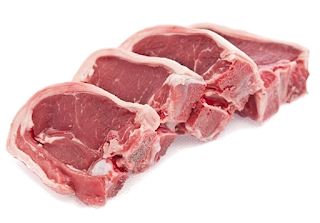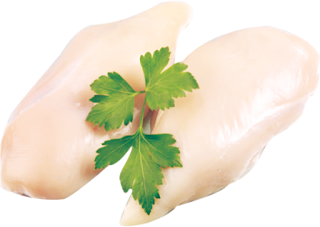 |
| Pin for future reference! |
I don’t often watch cooking programmes on the telly but yesterday, accidentally, I watched and enjoyed Rick Stein’s Long Weekends where he visited Bordeaux. One dish he ate there was steak in a rich sauce of shallots, bone marrow and Bordeaux wine which got me both drooling and thinking (being a woman I can do two things at once).
Pan sauces are so quick, so easy and so perfect for seared
meats I thought I’d explain the method, the stages, the reasoning and give some
good examples to get you started.
Quantities given are for one steak, pork chop, chicken breast, lamb chop or whatever, douuble up as appropriate.
Quantities given are for one steak, pork chop, chicken breast, lamb chop or whatever, douuble up as appropriate.
Pan Searing & the Maillard Reaction
~ The meat should be
patted dry and lightly seasoned before you start to cook it.
~ Generally speaking the best fat to use is a combination of 1 tbsp olive oil and a teaspoon of butter per steak or other piece of meat. On its own butter might burn but mixed with oil it will add its flavour without burning.
~ When pan frying ALWAYS get the pan good and hot before adding oil and then get the oil good and hot before adding the meat.
~ If cooking more than one piece of meat ALWAYS leave plenty of room between pieces, otherwise what they will actually do is steam rather than fry and they'll end up pallid and soggy.
~ When turning meat use tongs rather than a fork to manipulate it so as not to pierce it allowing valuable juices to be lost.
~ If the meat seems stuck to the pan when you want to turn it wait a little while; once a good crust has formed it will release itself from the pan, providing you dried the meat properly before cooking.
~ DO NOT SCRAPE, WIPE OR IN ANY WAY DISTURB THE BROWN RESIDUE IN THE PAN.
~ Generally speaking the best fat to use is a combination of 1 tbsp olive oil and a teaspoon of butter per steak or other piece of meat. On its own butter might burn but mixed with oil it will add its flavour without burning.
~ When pan frying ALWAYS get the pan good and hot before adding oil and then get the oil good and hot before adding the meat.
~ If cooking more than one piece of meat ALWAYS leave plenty of room between pieces, otherwise what they will actually do is steam rather than fry and they'll end up pallid and soggy.
~ When turning meat use tongs rather than a fork to manipulate it so as not to pierce it allowing valuable juices to be lost.
~ If the meat seems stuck to the pan when you want to turn it wait a little while; once a good crust has formed it will release itself from the pan, providing you dried the meat properly before cooking.
~ DO NOT SCRAPE, WIPE OR IN ANY WAY DISTURB THE BROWN RESIDUE IN THE PAN.
Resting Meat
Pan seared meat should always be set aside in a warm place, lightly covered with foil, for 10 minutes or so, during which time the fibres of the meat will relax, juices re-distribute and the meat will become tender and succulent. While the meat is relaxing you will have plenty of time to make the sauce.
Adding Aromatics – maybe!
This stage is optional but adding appropriate aromatics such
as very finely chopped shallots, onions or garlic, spices can add a lot to a
sauce. Here’s what you do …
~ Pour off any
excess fat being careful not to disturb any of the fond.
~ Over medium heat add your aromatics and stir for 2-3 minutes till vegetables have soften and spices have “bloomed” which means they have released their volatile oils and smell gorgeous.
~ Over medium heat add your aromatics and stir for 2-3 minutes till vegetables have soften and spices have “bloomed” which means they have released their volatile oils and smell gorgeous.
Deglazing the Pan
~ Add a about
100ml of appropriate liquid to the pan. – red wine or beef stock for beef and lamb,
white wine or chicken stock for pork and poultry- get the idea? Try Madeira with steak, sherry or balsamic vinegar also work well in some instances. Even water is a
lot better than nothing!
~ Bring it to a simmer scraping up the fond that has stuck to the bottom of the pan.
~ Bring it to a simmer scraping up the fond that has stuck to the bottom of the pan.
Reducing the Liquid
~ Cook stirring and
scraping with a wooden spoon till all these yummy bits have dissolved into the
liquid and continue cooking till the liquid has thickened and is syrupy enough
to lightly coat the wooden spoon.
You now have a fine sauce which will be delicious served
with your lump of protein, but you can go one step further and make it even
better!
Finish the Sauce
Add a generous knob of butter or a splash of cream and stir
in. Butter will not only add flavour and lushness it also makes the sauce glossy. Cream makes it ... creamier. Here's an idea - you could use a deliciously and appropriately flavoured butter! Oh and don't boil the sauce after adding butter.
Taste & Season
Whether or not you have enriched the sauce now is the time to taste and
season with salt and whatever else you fancy and is appropriate e.g. black
pepper, a dash of hot sauce, a spoonful of apple sauce (great for pork) fresh
chopped herbs, a squeeze of lemon, a little whole grain mustard or whatever. More details here on how to season to taste.
Serve immediately with the well-rested meat. Pan sauces tend
to be rich, you don’t need a great deal, just a few spoonsful.
So that’s how to do it - lots to read but not much to do! –
and here’s a few ideas.
Pan Sauce Suggestions
Pan Sauces for Pork
~ Apple Cider Sauce -
deglaze with chicken stock and/or dry cider and, once reduced add a spoonful of
apple sauce and a little chopped fresh sage.
~ Honey Mustard Sauce – deglaze with chicken stock, reduce then add a spoonful of runny honey and a spoonful of whole grain mustard.
~ Honey Mustard Sauce – deglaze with chicken stock, reduce then add a spoonful of runny honey and a spoonful of whole grain mustard.
Pan Sauces for Steak
~ Shallot Sauce – cook
a finely chopped shallot in the pan at the aromatic stage and deglaze with red
wine and/or beef stock, maybe add a teaspoon of Dijon or wholegrain mustard or
even a teaspoon of black garlic. Finish with butter.
~ Peppered Steak – coat the steak with freshly and coarsely ground black pepper before pan frying. Deglaze the pan with beef stock and a little brandy. Finish with cream.
~ Caramelised Onion Sauce – deglaze with beef stock and/or red wine, reduce and then stir in a spoonful of onions cooked my favourite way. Finish with butter.
~ Peppered Steak – coat the steak with freshly and coarsely ground black pepper before pan frying. Deglaze the pan with beef stock and a little brandy. Finish with cream.
~ Caramelised Onion Sauce – deglaze with beef stock and/or red wine, reduce and then stir in a spoonful of onions cooked my favourite way. Finish with butter.
Pan Sauces for Lamb
~ Red Wine &
Rosemary Sauce – cook a finely chopped garlic clove at the Aromatics stage, deglaze
with red wine, reduce the sauce till it coats the wooden spoon. Stir in a
little freshly finely minced rosemary and finish with a little butter.
~ Minty Pan Sauce – as above but
instead of the rosemary and parsley add a spoonful of mint sauce.
~ Roasted Garlic Sauce – deglaze the pan with a light chicken or vegetable stock, reduce and then squeeze in a couple of roasted garlic cloves. Finish with butter.
~ Roasted Garlic Sauce – deglaze the pan with a light chicken or vegetable stock, reduce and then squeeze in a couple of roasted garlic cloves. Finish with butter.
Pan Sauces for Chicken
~ Tarragon Sauce –deglaze
with white wine and/or chicken stock. Finish with cream and maybe a handful of
finely chopped tarragon.
~ Garlicky Mushroom Sauce – at the aromatics stage add a very finely chopped garlic clove and a handful of quartered mushrooms and sauté till the mushrooms are browning. Deglaze with white wine and finish with cream.
~ Lemon Sauce – deglaze with chicken stock, reduce, then add a squeeze of lemon, some freshly chopped parsley and the juice of half a lemon. You could add some capers – but I wouldn’t because I don’t like them!
Of course these are all just suggestion, follow the steps and invent your own sauces.
~ Garlicky Mushroom Sauce – at the aromatics stage add a very finely chopped garlic clove and a handful of quartered mushrooms and sauté till the mushrooms are browning. Deglaze with white wine and finish with cream.
~ Lemon Sauce – deglaze with chicken stock, reduce, then add a squeeze of lemon, some freshly chopped parsley and the juice of half a lemon. You could add some capers – but I wouldn’t because I don’t like them!
Of course these are all just suggestion, follow the steps and invent your own sauces.







2 comments:
Oh my Thank you looks delicious ❤
thank you. simple, concise, yet thorough explanation. wonderful.
Post a Comment